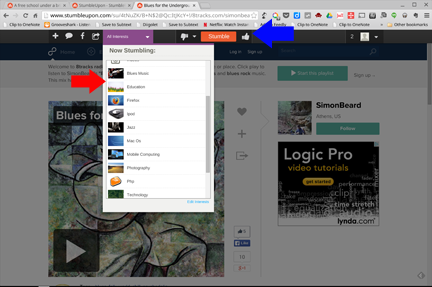Eli Pariser in a Ted Talk and book (The filter bubble) proposed that the way Google personalizes search based on personal preferences may mislead us into believing we are learning more when we are actually just hearing what we want to hear. To me (ex professional Intro psych teacher), this very much sounds like the idea of a confirmation bias. It is likely we do not need help feeding our biases (Pariser’s concern with Google). We do this quite nicely on our own. To illustrate this issue, I typically propose that most individuals have a “go to” news site (CNN, Fox, MSNBC) and may spend hours on this site without sampling from other sites. It do accept Pariser’s concern that despite the potential of the Internet to explore different points of view it may be our biases that are guiding the selection of the content we consume.
I have been thinking about this issue for some time wondering just how I might encourage myself to avoid the problem. Was there a technological solution? What made sense to me was to commit some time to services that allowed the designation of topics of interest, but then allowed the service to select content relevant to the topic. In theory it would be like exploring a current event but not requiring the take on that event be provided by Fox or CNN.
This is a goal in search of a perfect implementation. Here are my two current tools of choice.
StumbleUpon has been around the longer of the two. The service allows the selection of “Issues” (red arrow). Stories are then presented related to these issues. If you thumbs up or thumbs down a story you can vary the frequency of receiving similar stories in the future (I hope this changes the topic of stories and not the perspective). Selecting Stumble presents another story without influencing future selections.
My most recent interest is called Random (iPad only app at present). Random is “more random” than StumbleUpon. Topics appear on the screen and change every few seconds until one is selected. Once selected, a story associated with that topic (by tag) appears. After reading (or not), tapping at the top of the story page brings up a grid of related tags. You can back out of a particular exploration by selecting the white space and this starts the process over. I could not find much on the algorithm behind this system, but what I could find indicated information is stored on your device in a way that would guide future content. From experience, I have yet to sense how this works. I find the app interesting to explore, but wish I could seed the process more directly (as is the case with StumbleUpon).



You must be logged in to post a comment.